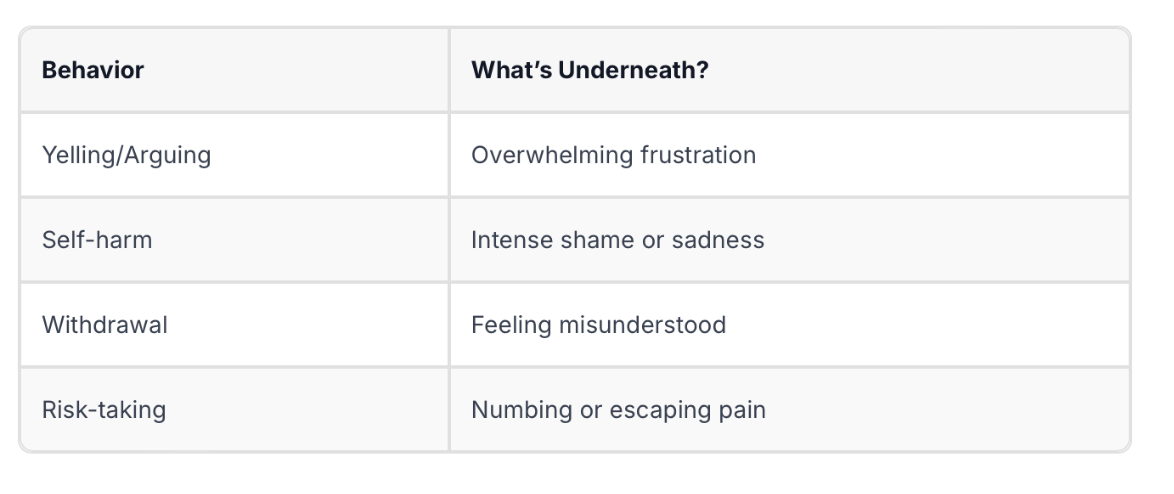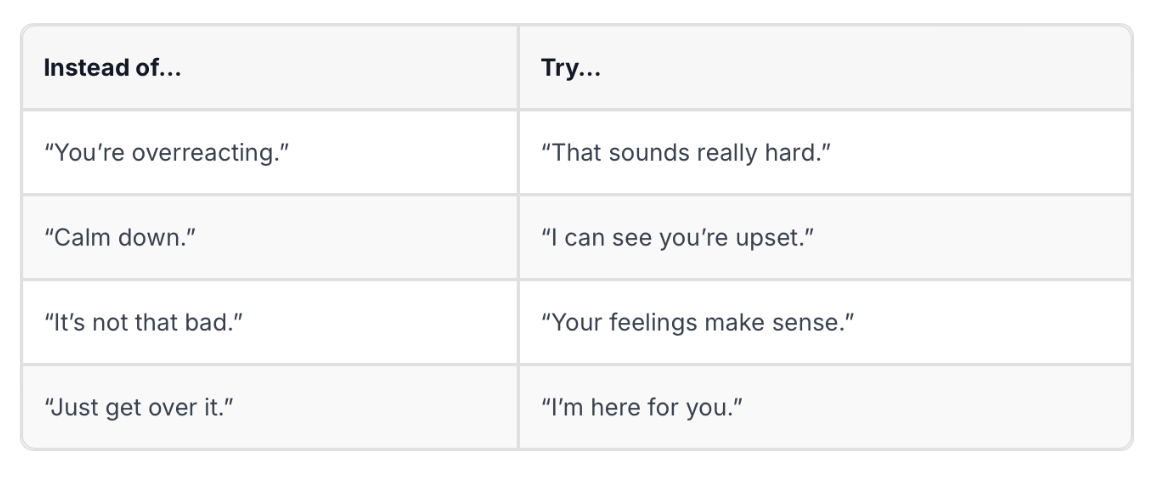About 20% of teens are what we call “Fire Feelers”—biologically wired to feel emotions more quickly, more intensely, and for longer than their peers. These teens are highly sensitive, and their emotional “thermostat” is set higher than most.
Key signs of a Fire Feeler:
Emotions hit fast and hard (0 to 100 in seconds)
Slow to calm down after a trigger
Seem “overreactive” to small things
Struggle to organize behavior around goals when emotions are high
Why “Bad” Behaviors Are Actually Survival Skills
When a teen is overwhelmed, their brain is in survival mode. Behaviors like yelling, self-harm, or shutting down aren’t just “acting out”—they’re attempts to escape emotional pain.
Common behaviors and what’s underneath:
The Cycle: Biology Meets Environment
It’s not just biology. When a sensitive teen is told “you’re overreacting” or “just calm down,” they internalize the message that their feelings are wrong. This creates a cycle:
Teen feels overwhelmed
Environment invalidates (“It’s not that bad”)
Teen believes they’re “broken”
Behaviors escalate to communicate pain
What Actually Helps: Validation Before Problem-Solving
Most parents focus on stopping the behavior—grounding, taking away phones, or lecturing. But if you skip over the emotion, your teen feels even more misunderstood, and the cycle continues.
Try this instead:
Pause. Notice your own reaction.
Validate. (“That sounds really hard.” “I can see you’re struggling.”)
Once your teen is calm, work together on skills for managing emotions.
Validation doesn’t mean you agree with the behavior.
It means you understand the feeling behind it.
Real-Life Example
“I was that ‘difficult’ teen. Self-harm, acting out, shutting down—everyone focused on my behavior, but no one saw the emotional fire inside. Now, as a therapist, I help hundreds of teens each week by treating the emotions, not just the actions.”
—Katie K. May, LPC, DBT-LBC
Quick Reference: What to Say (and Not Say)
The Bottom Line
Your teen’s behavior is a clue. When you validate first and teach skills second, you help your teen build a life worth living and loving.


